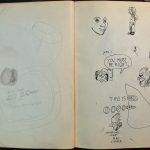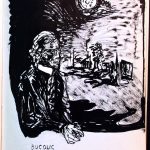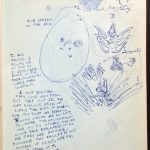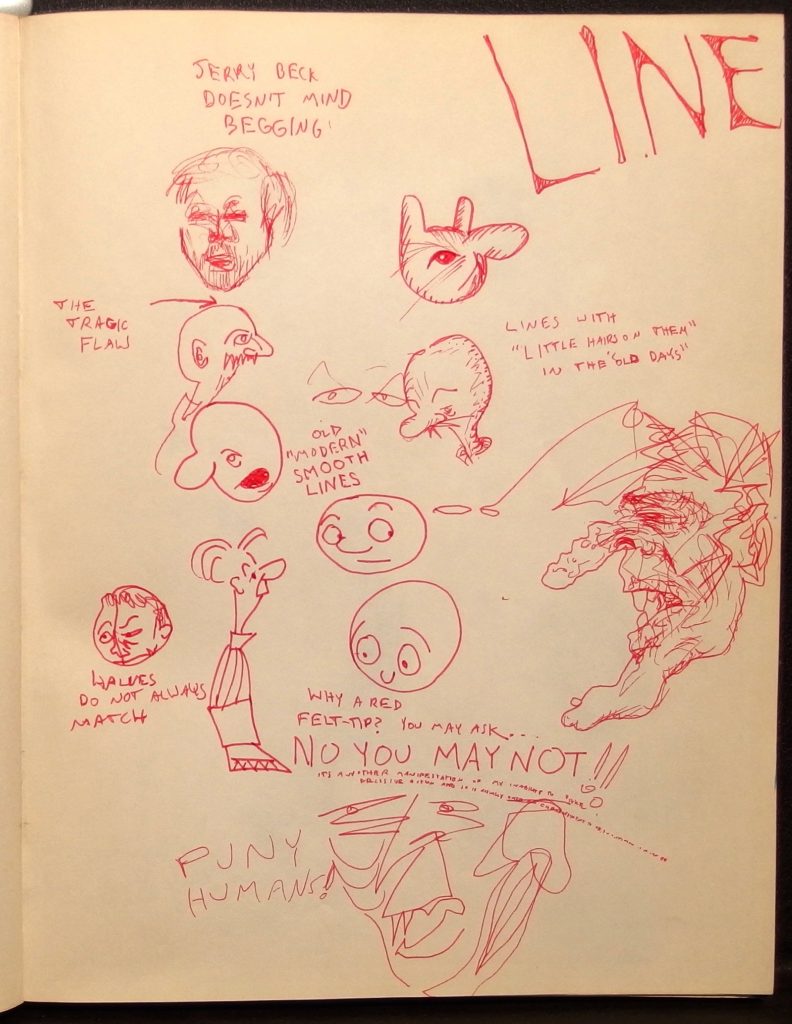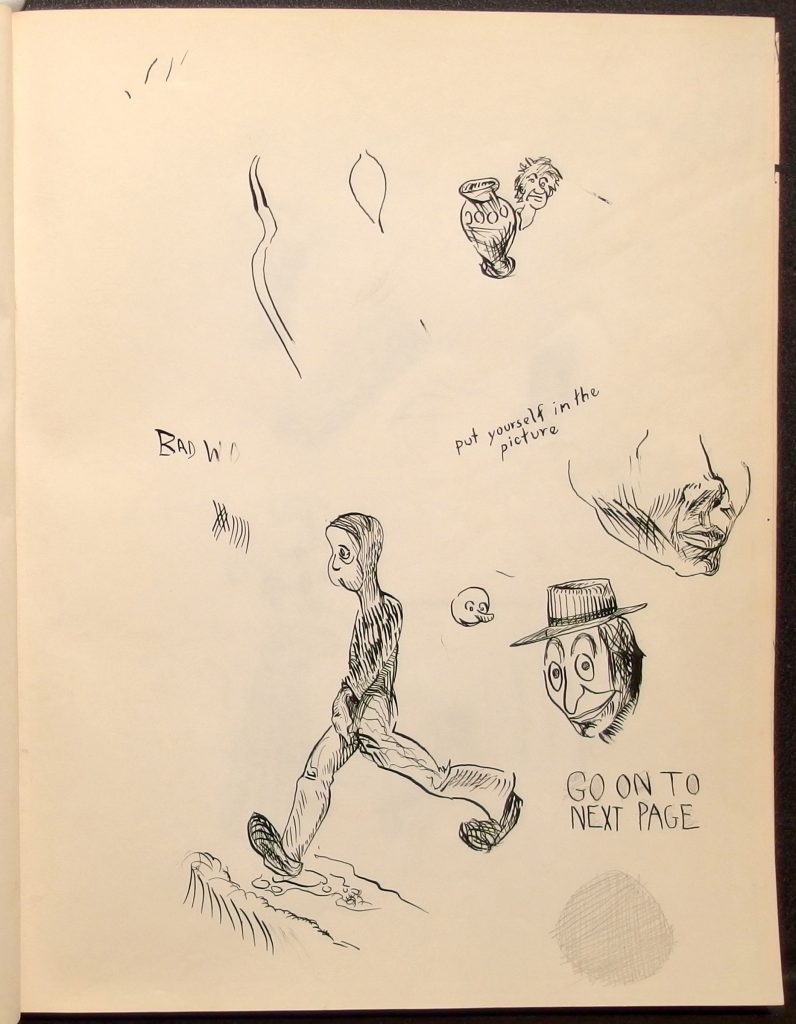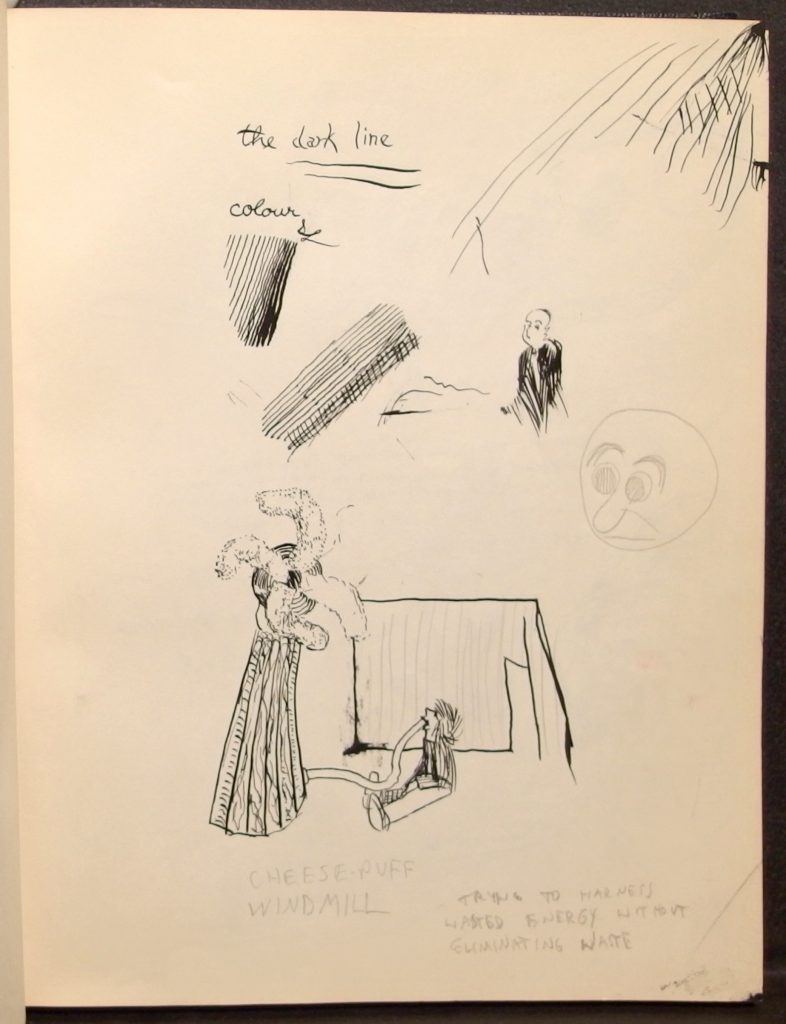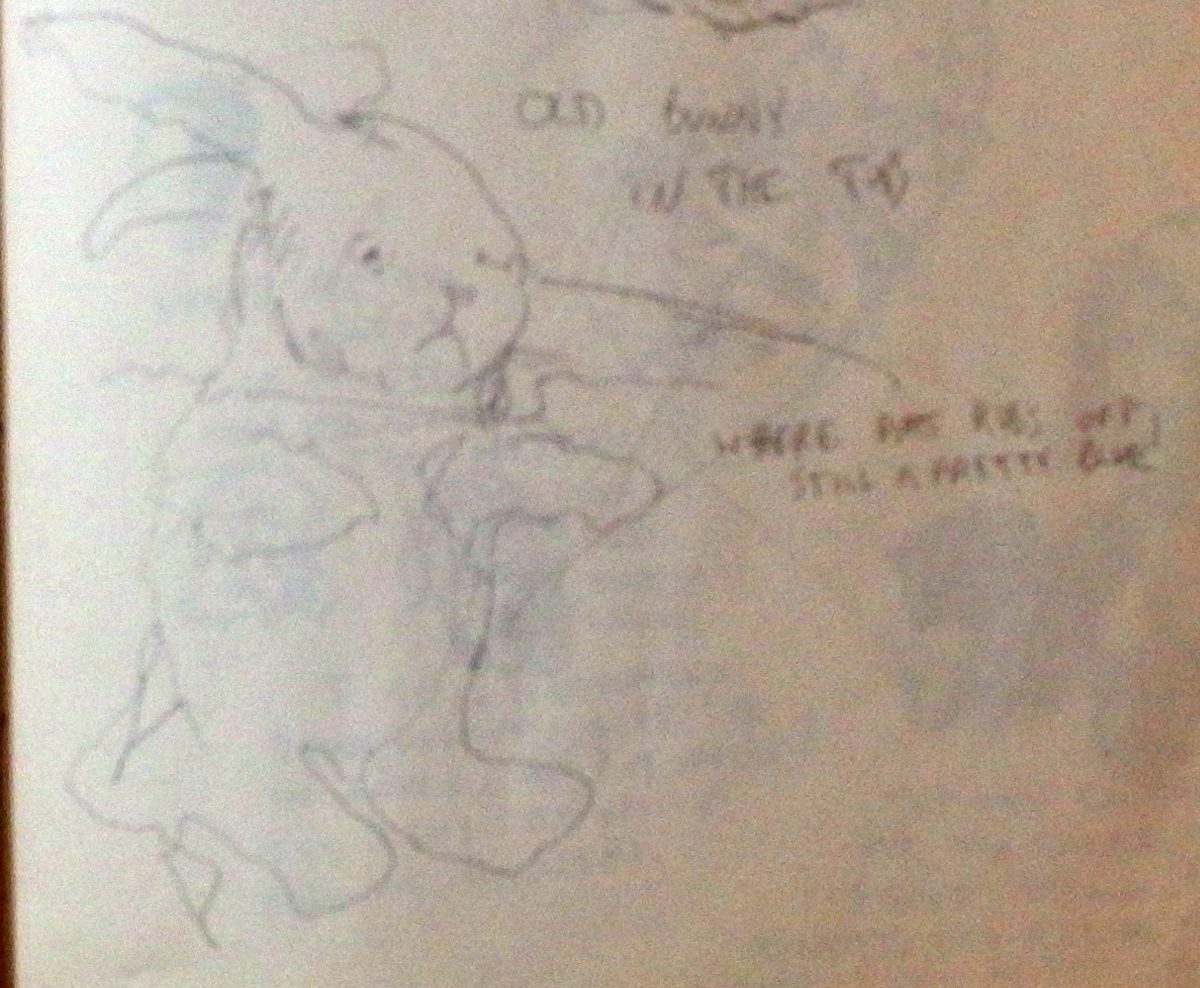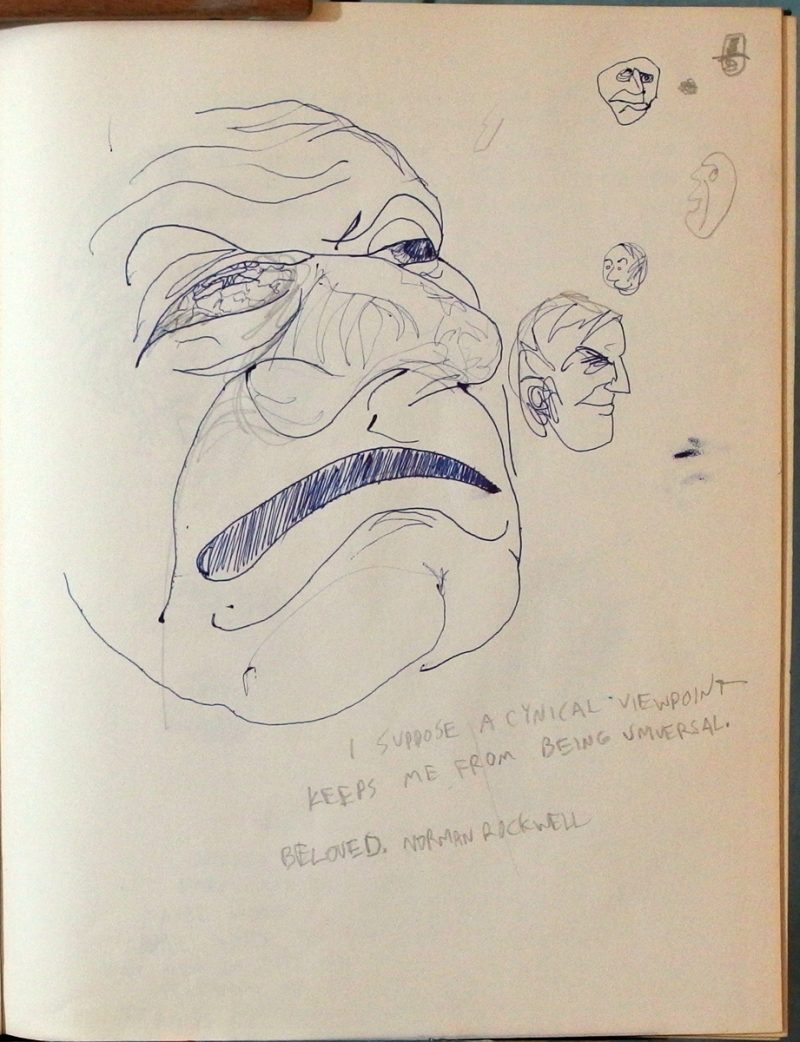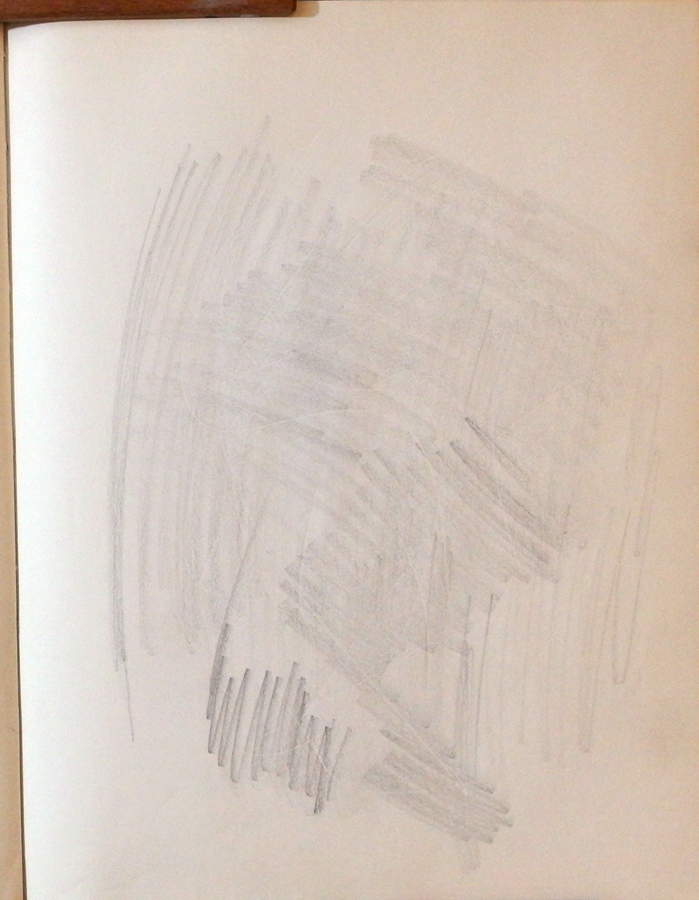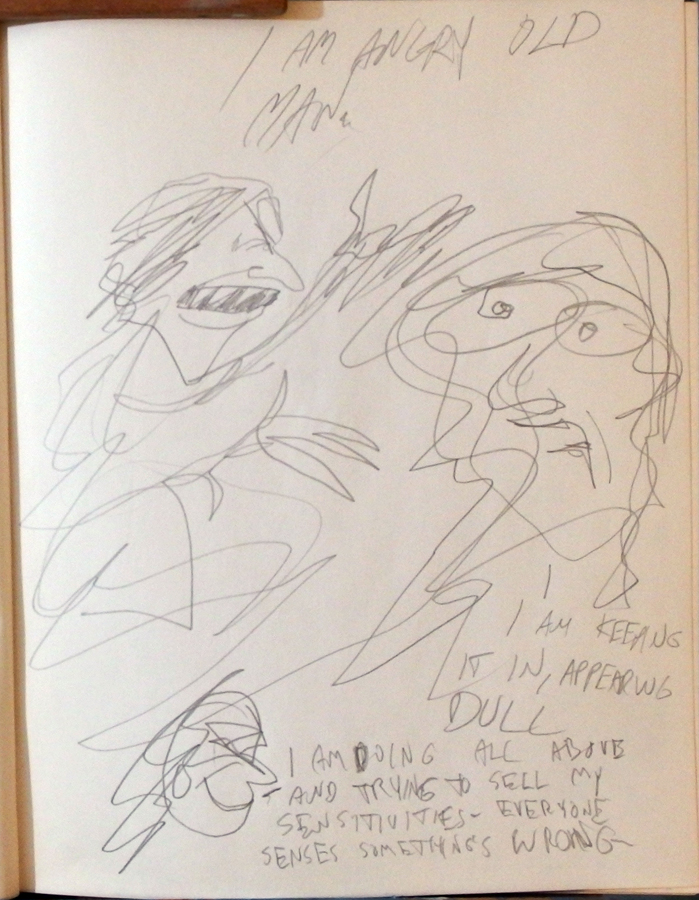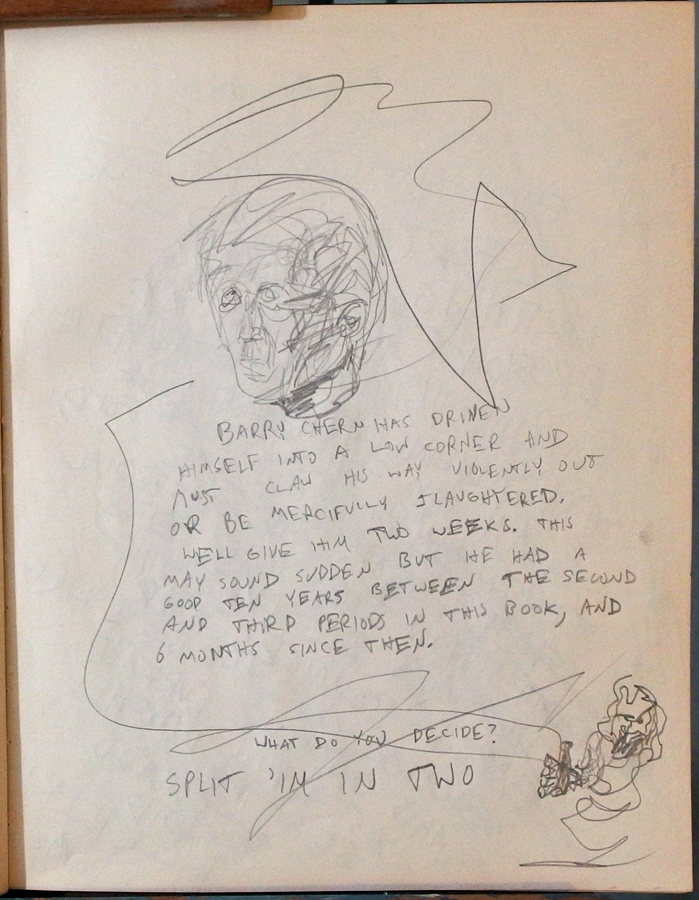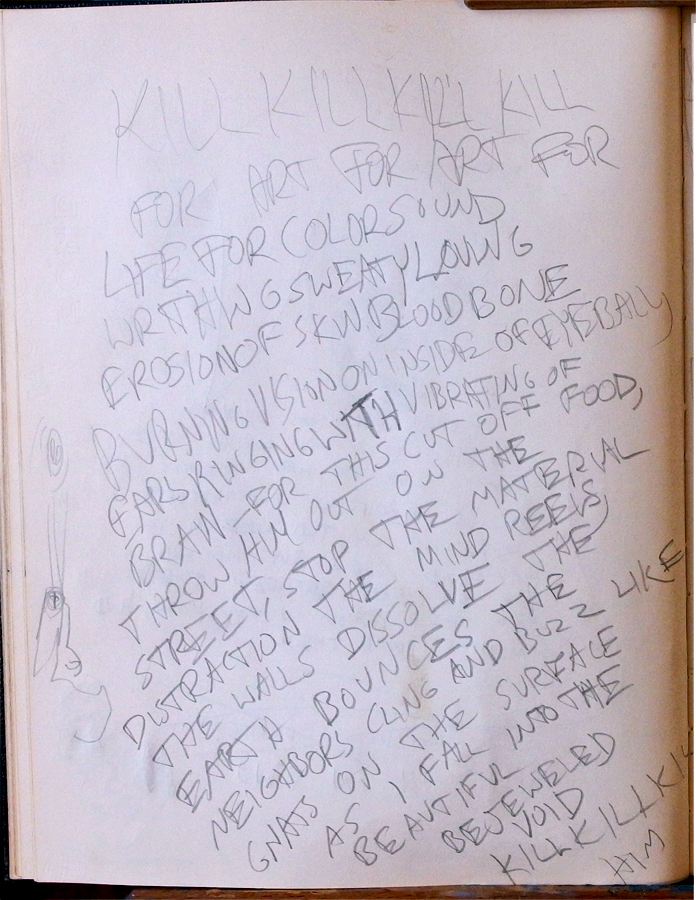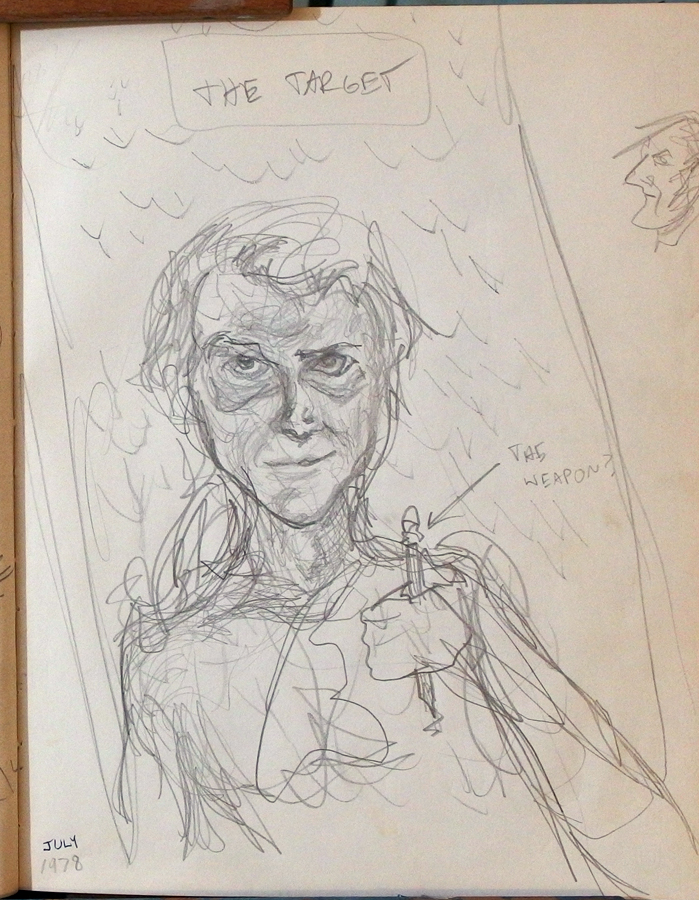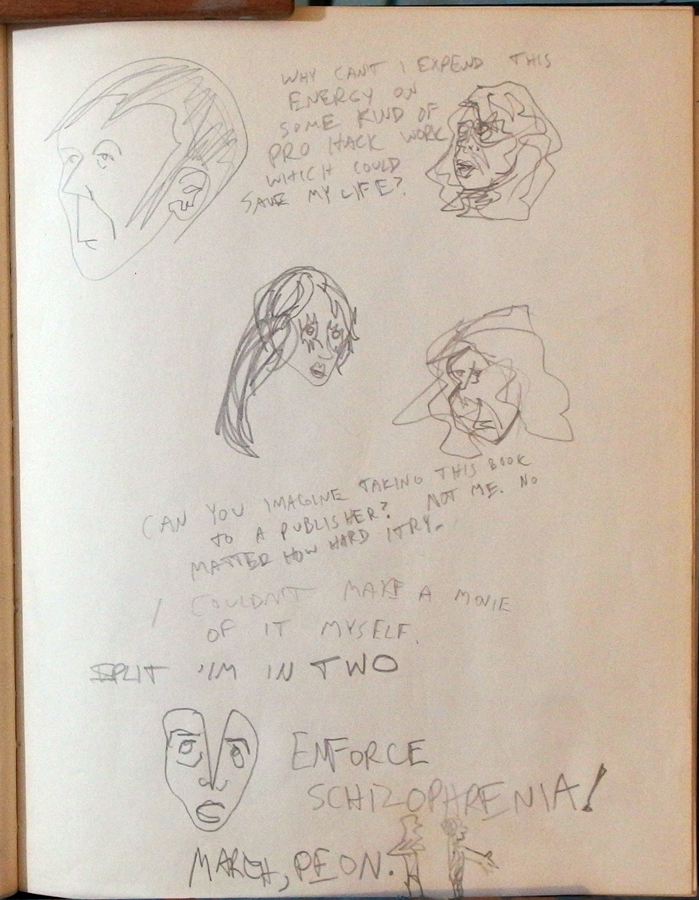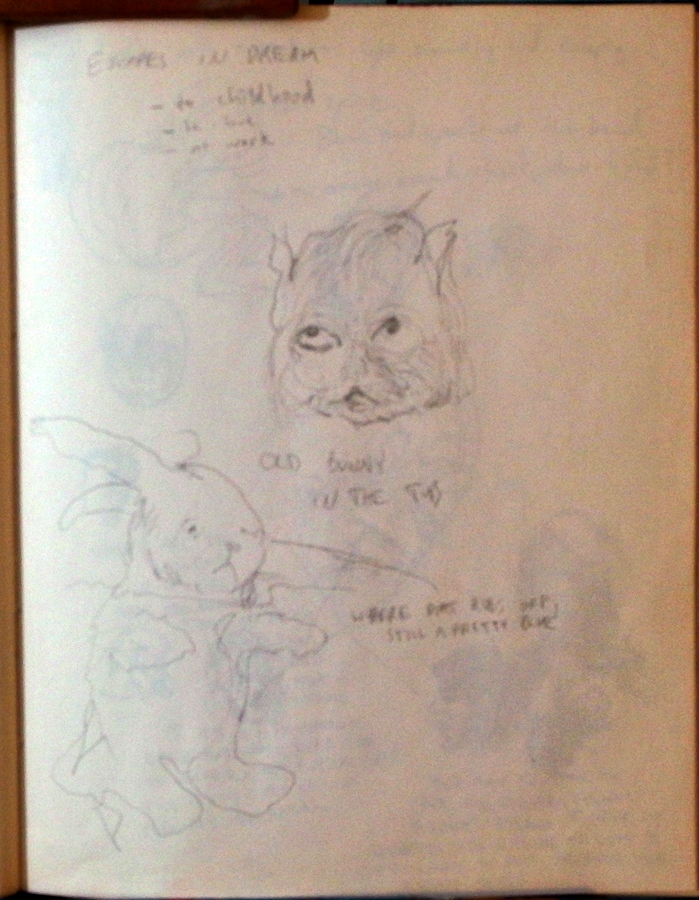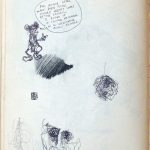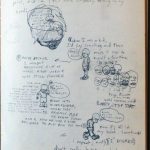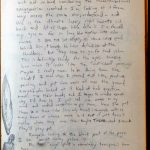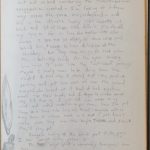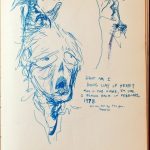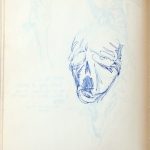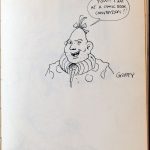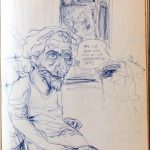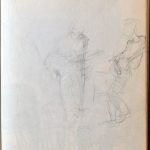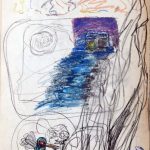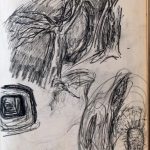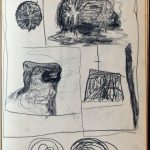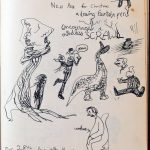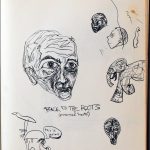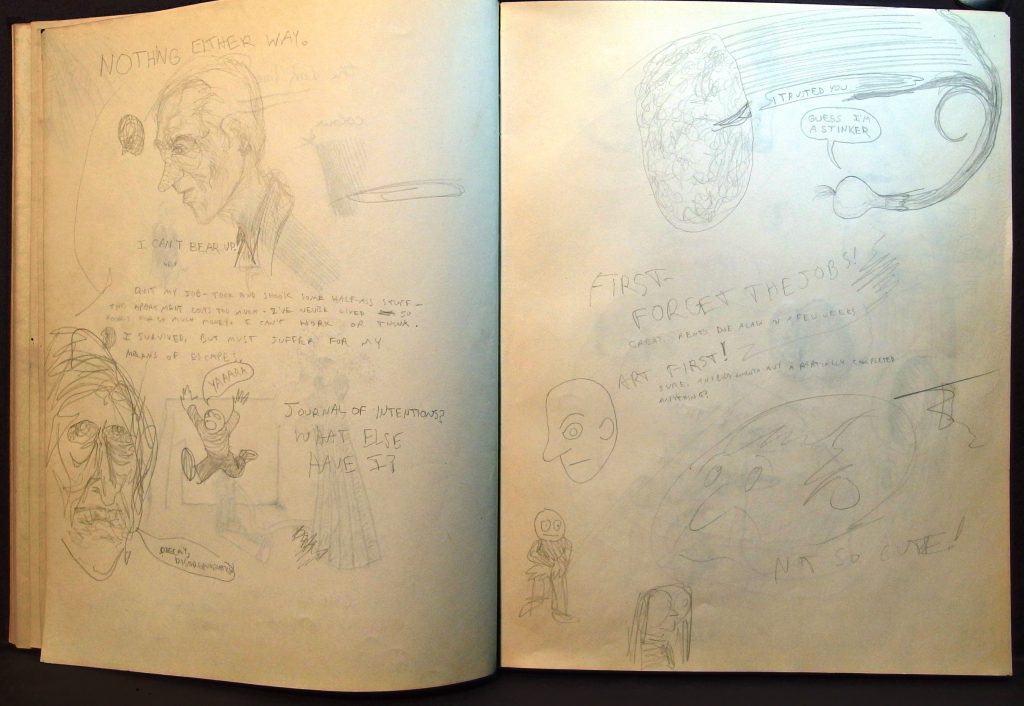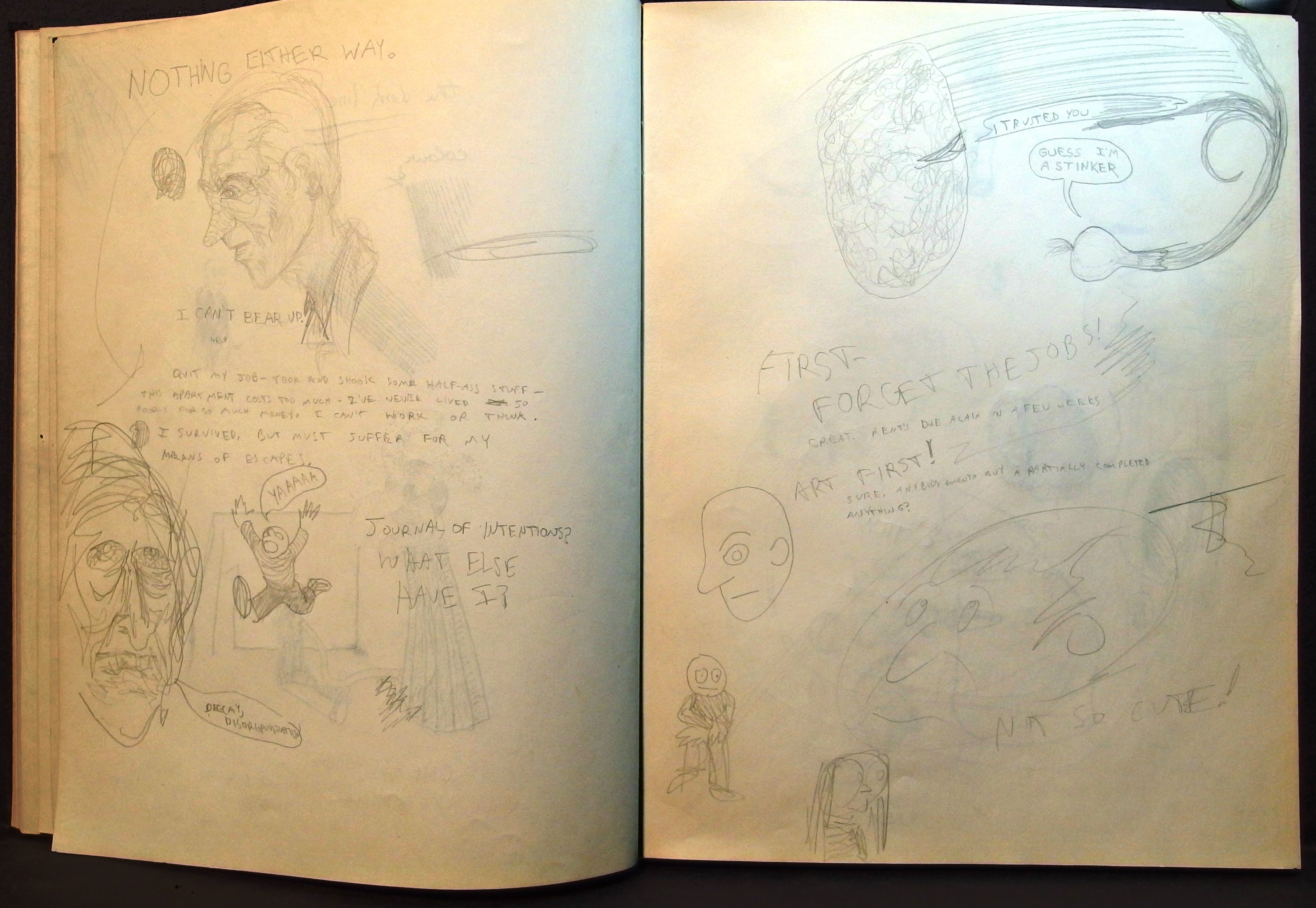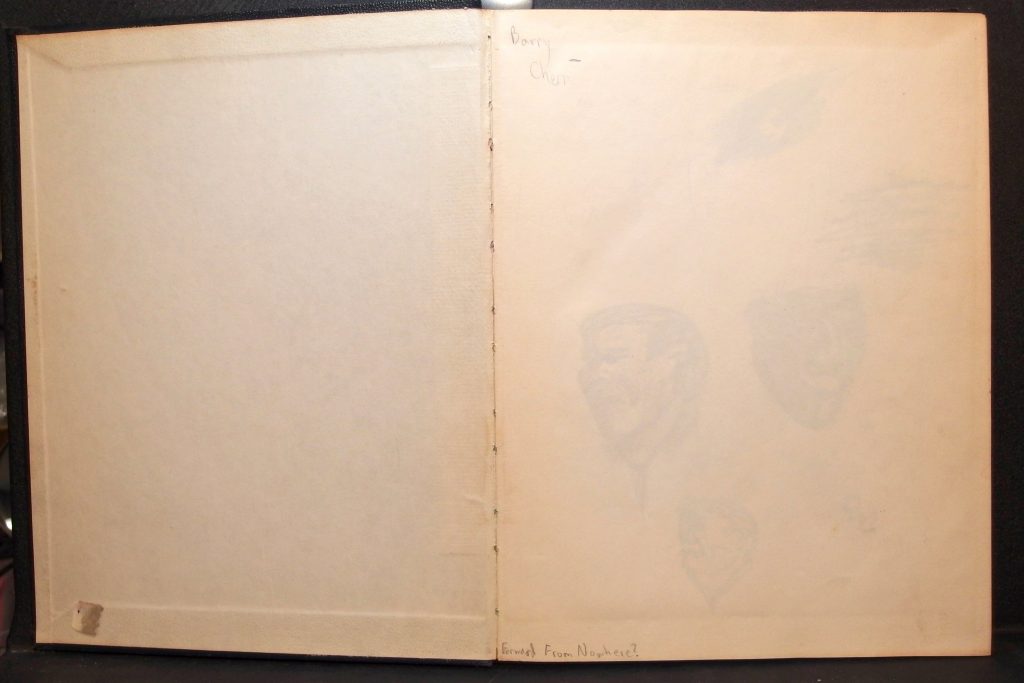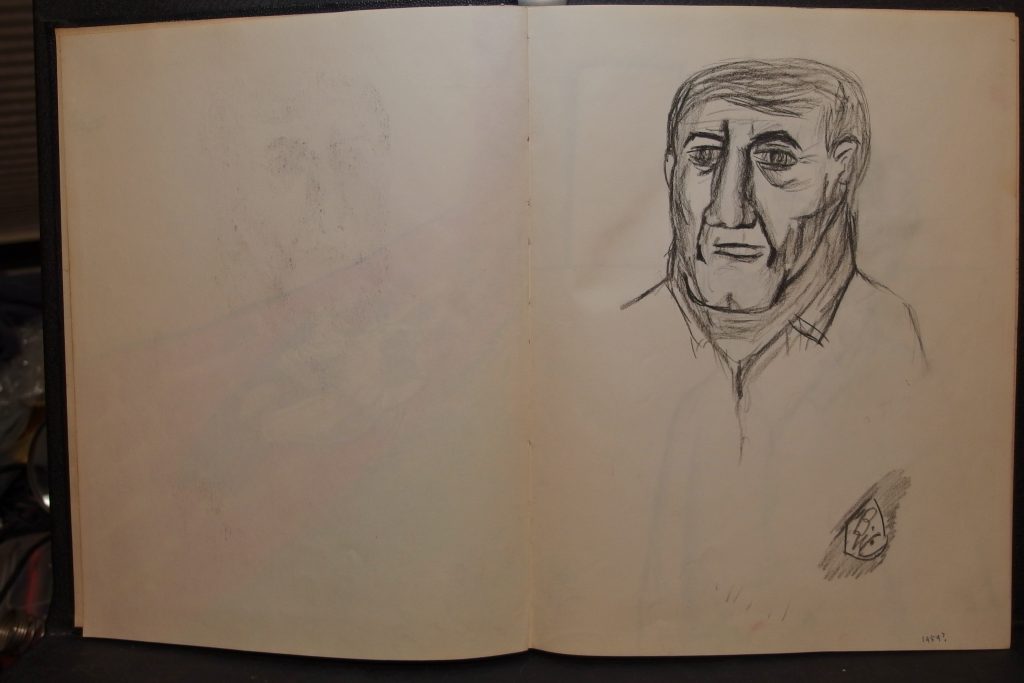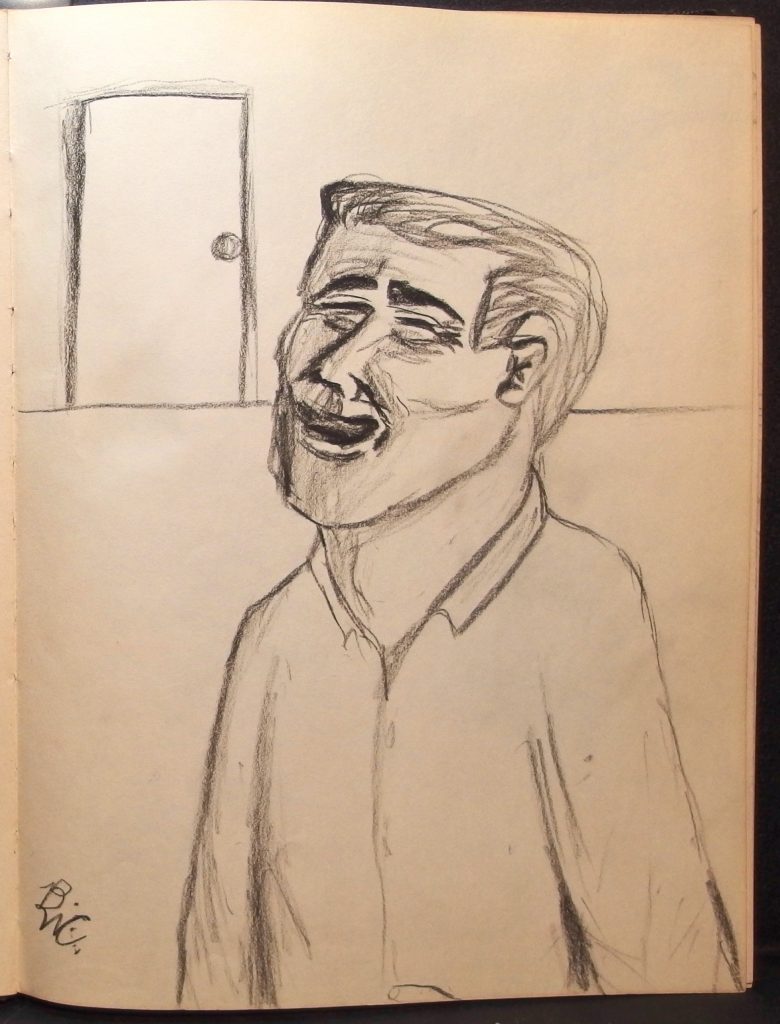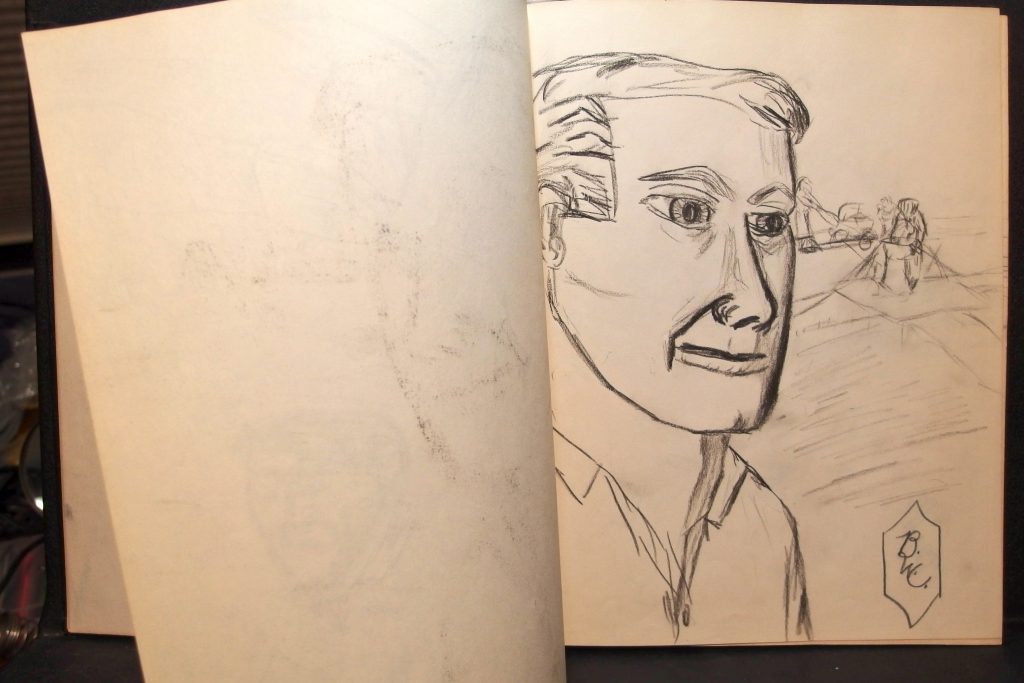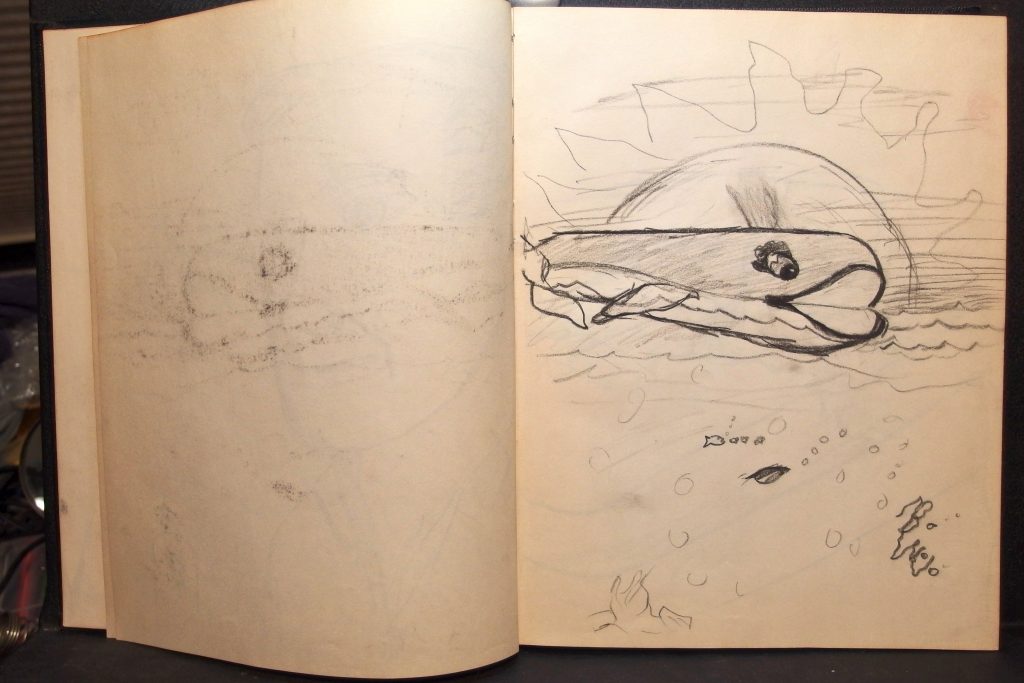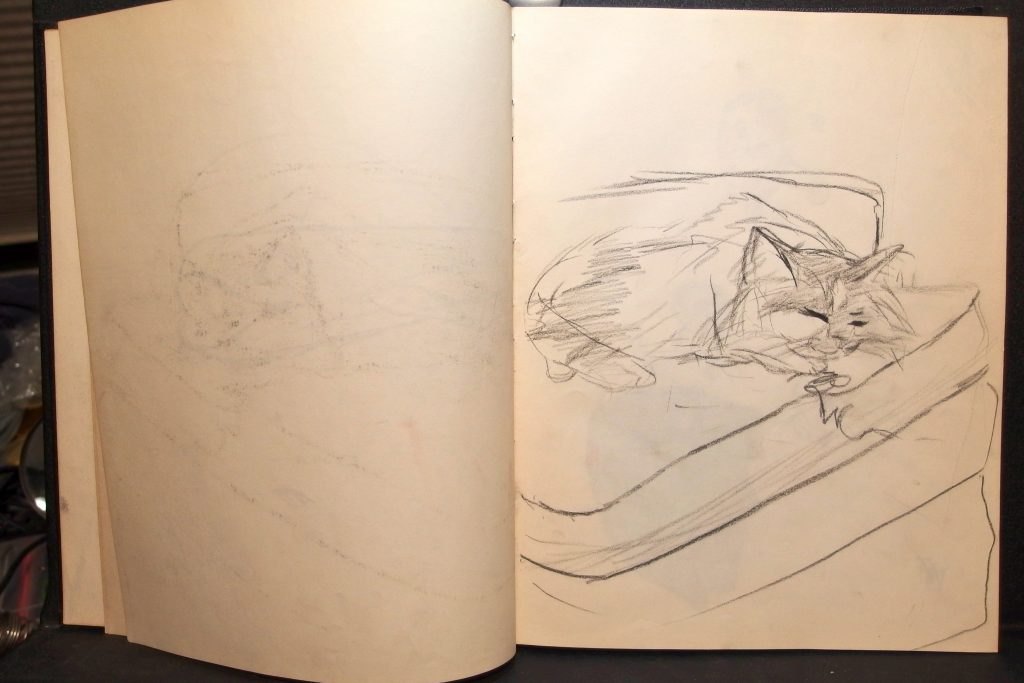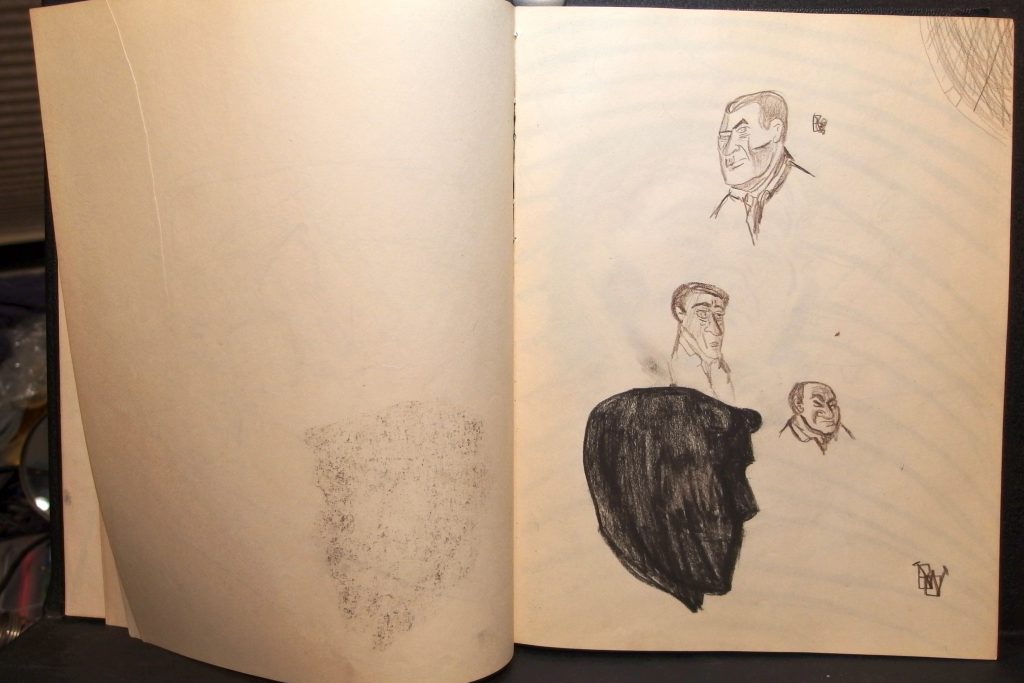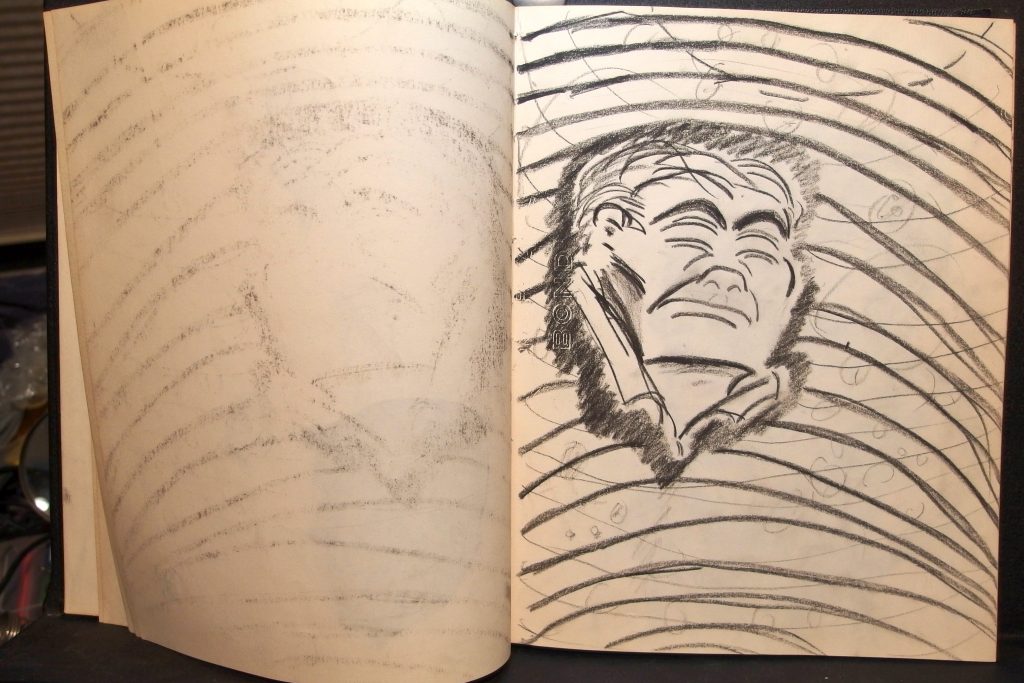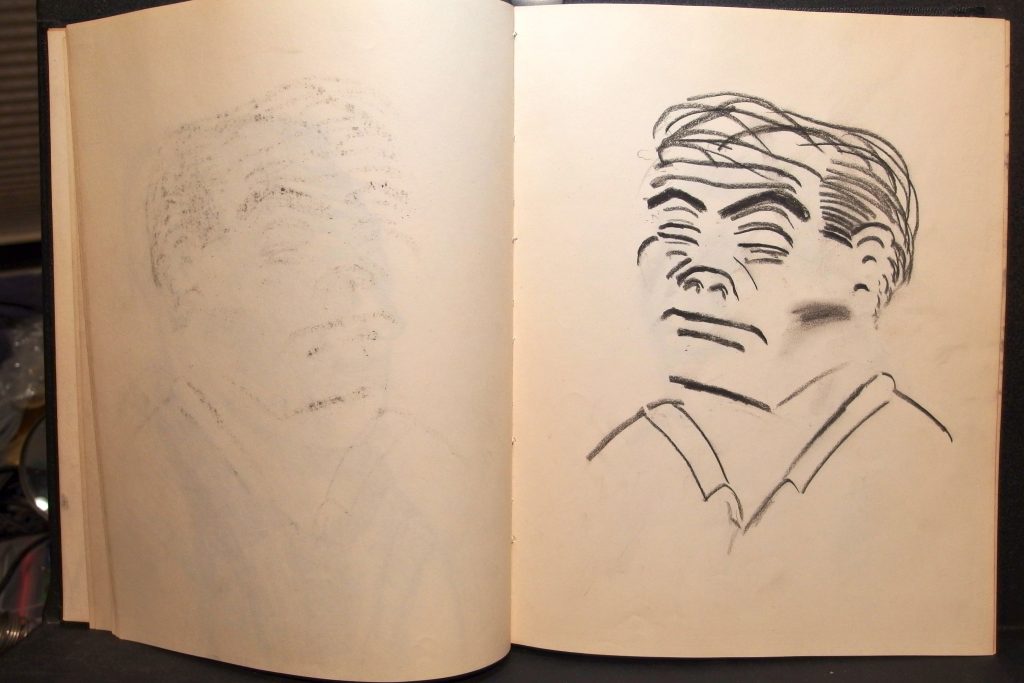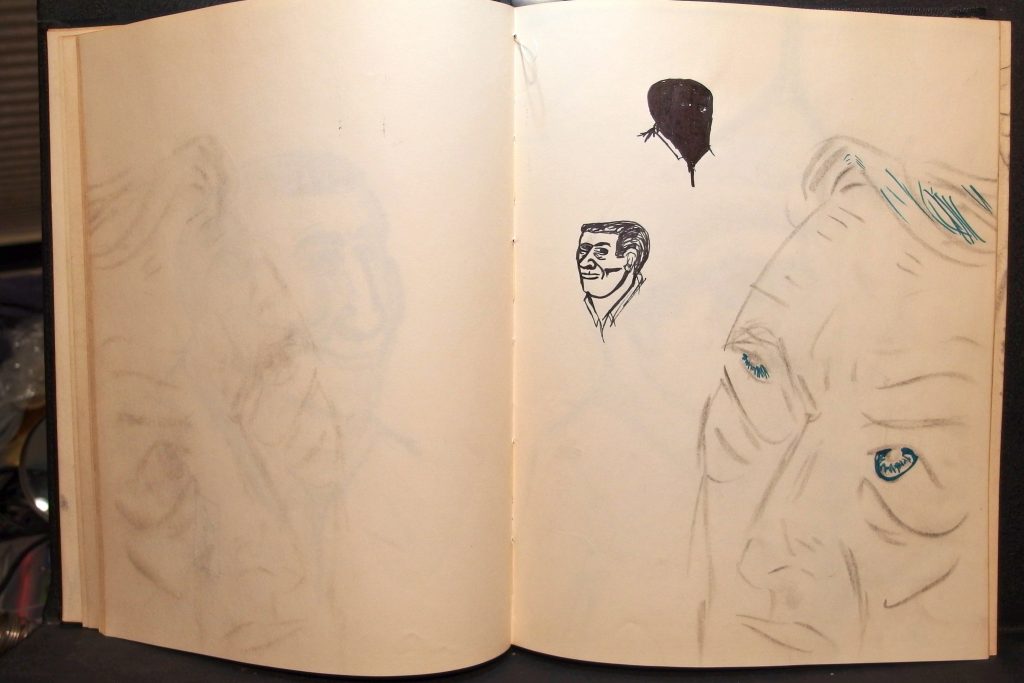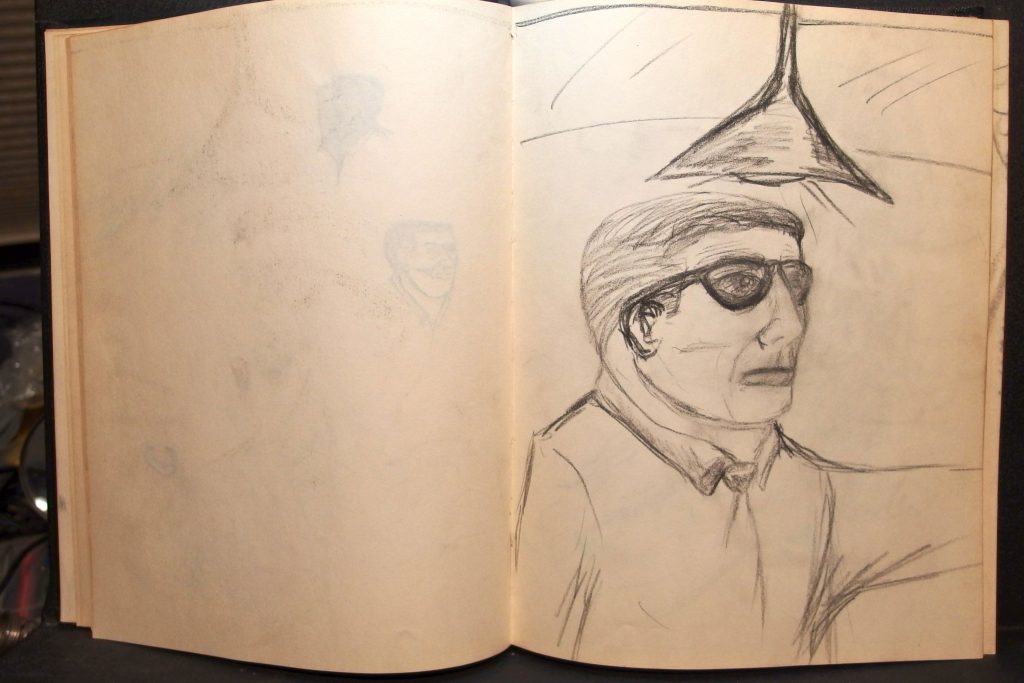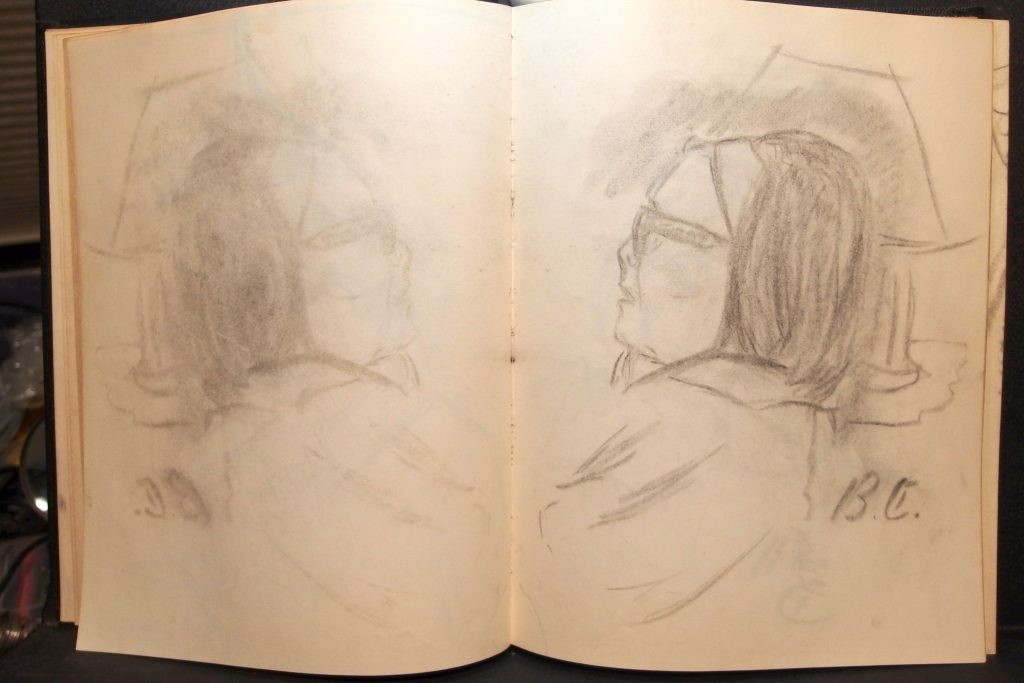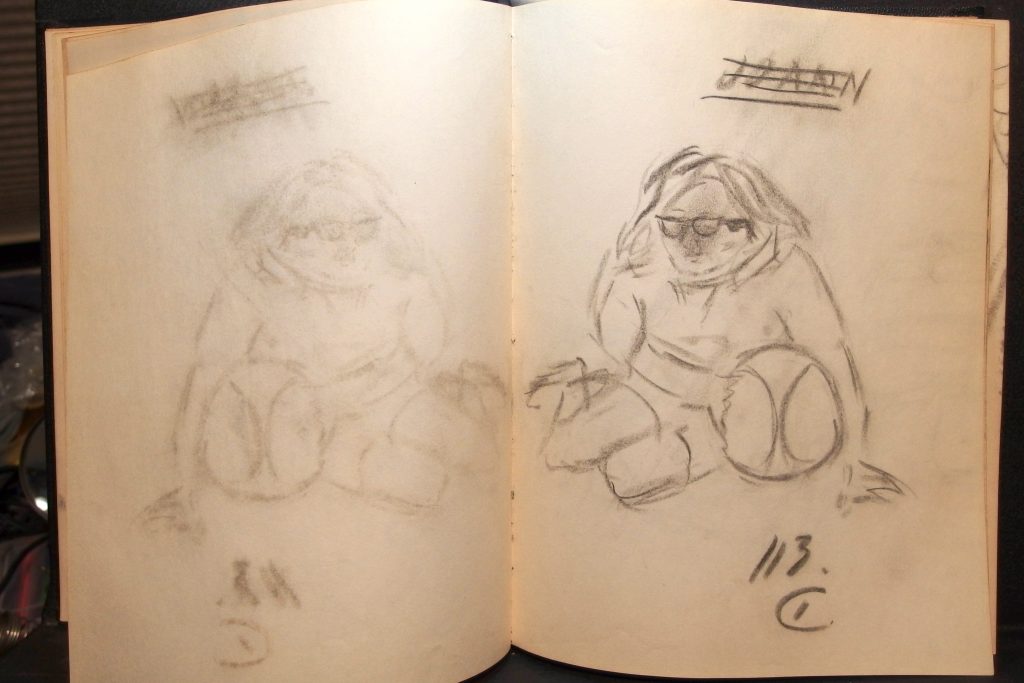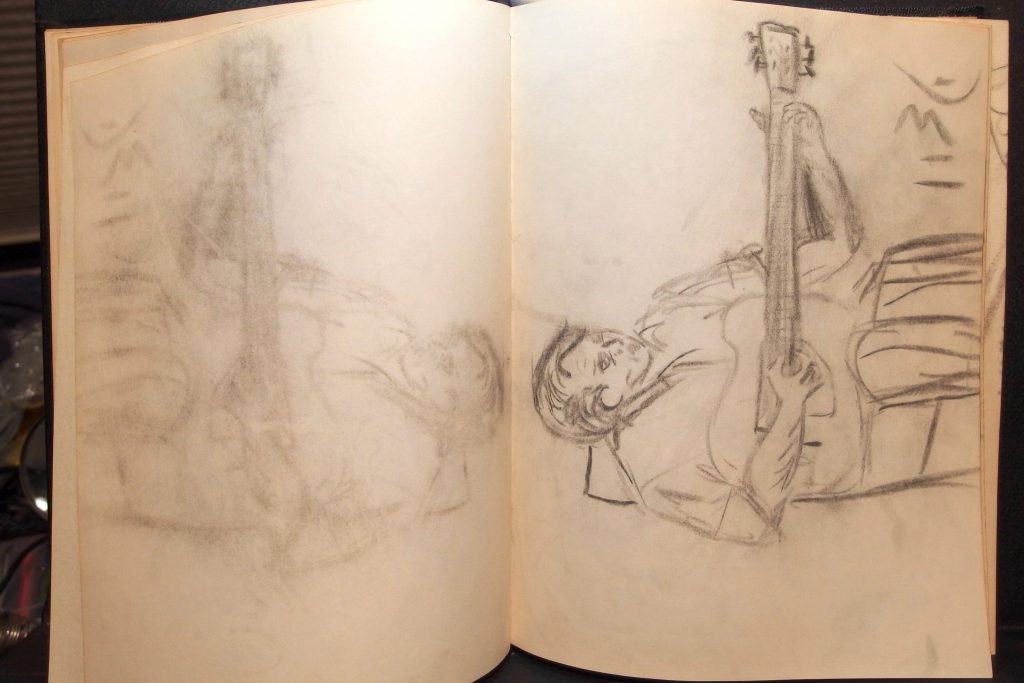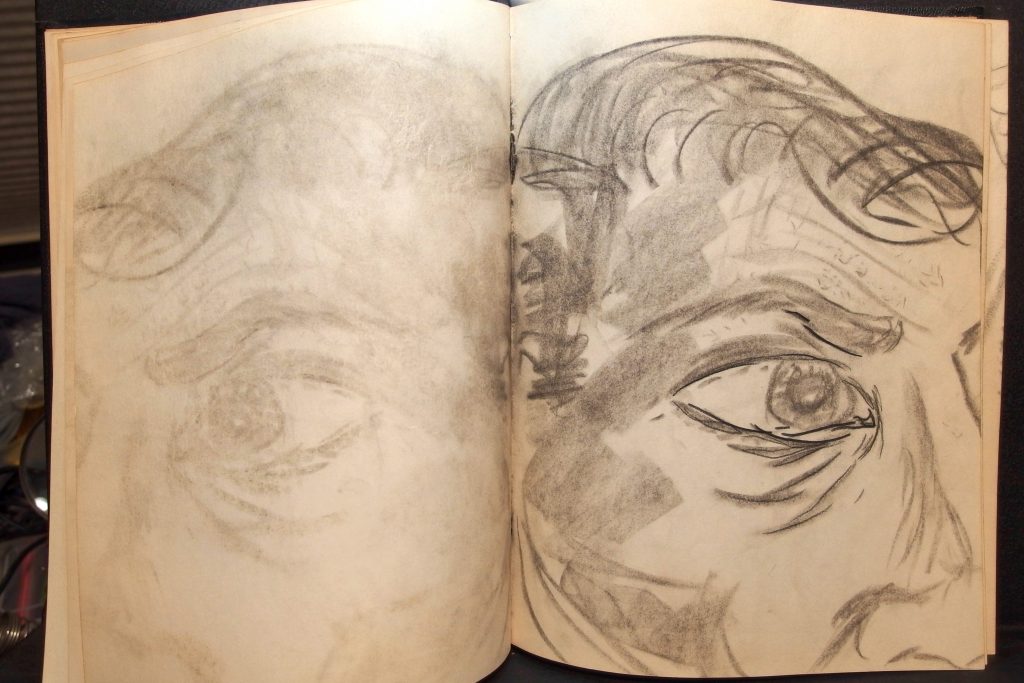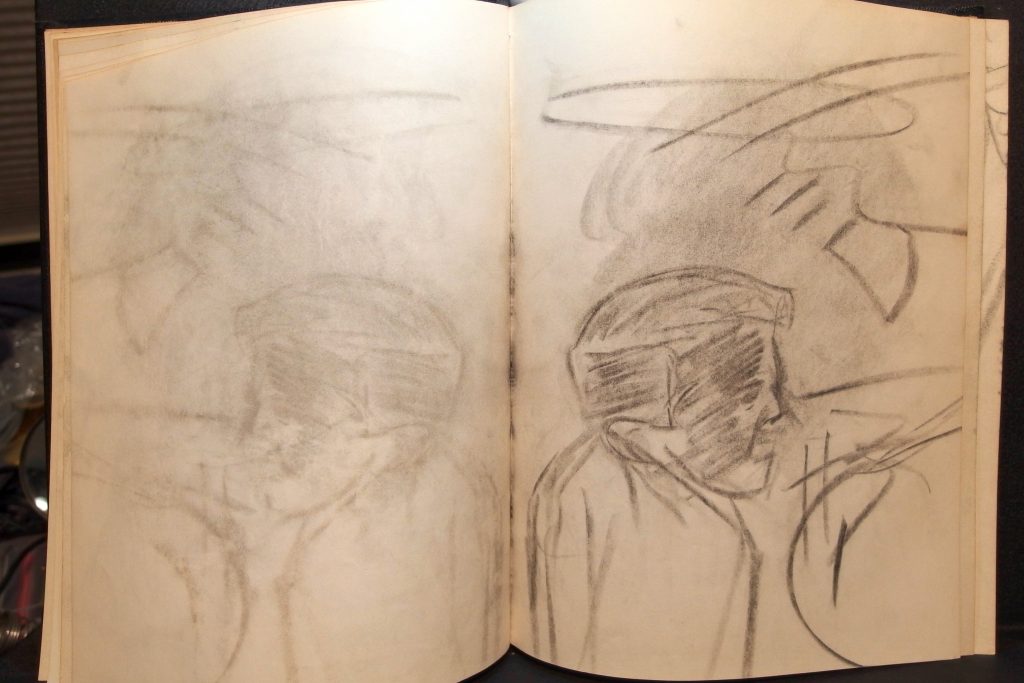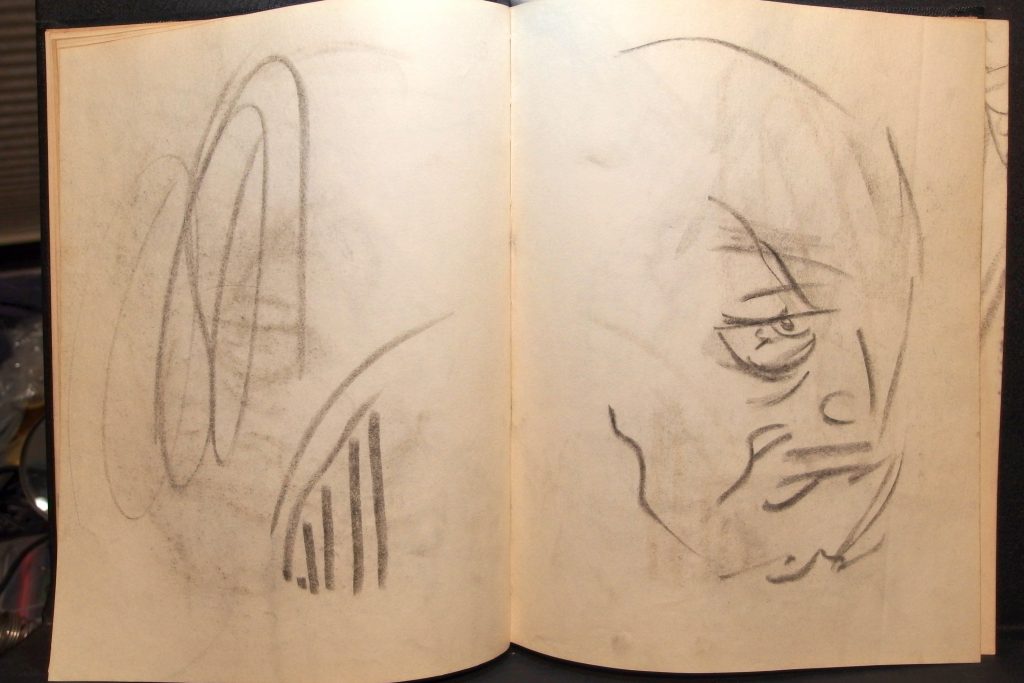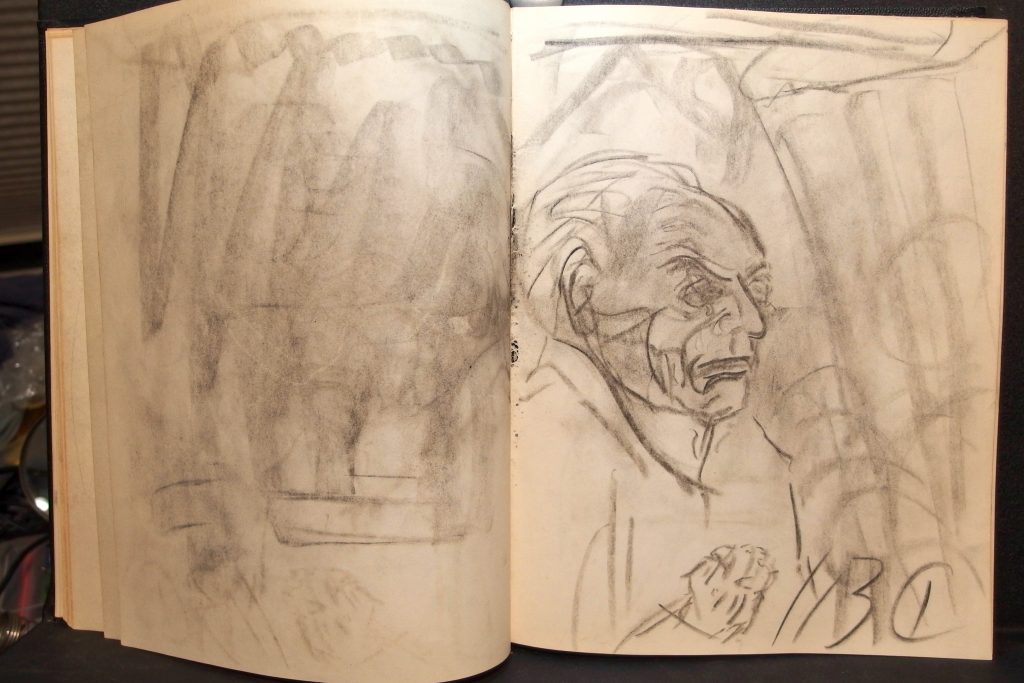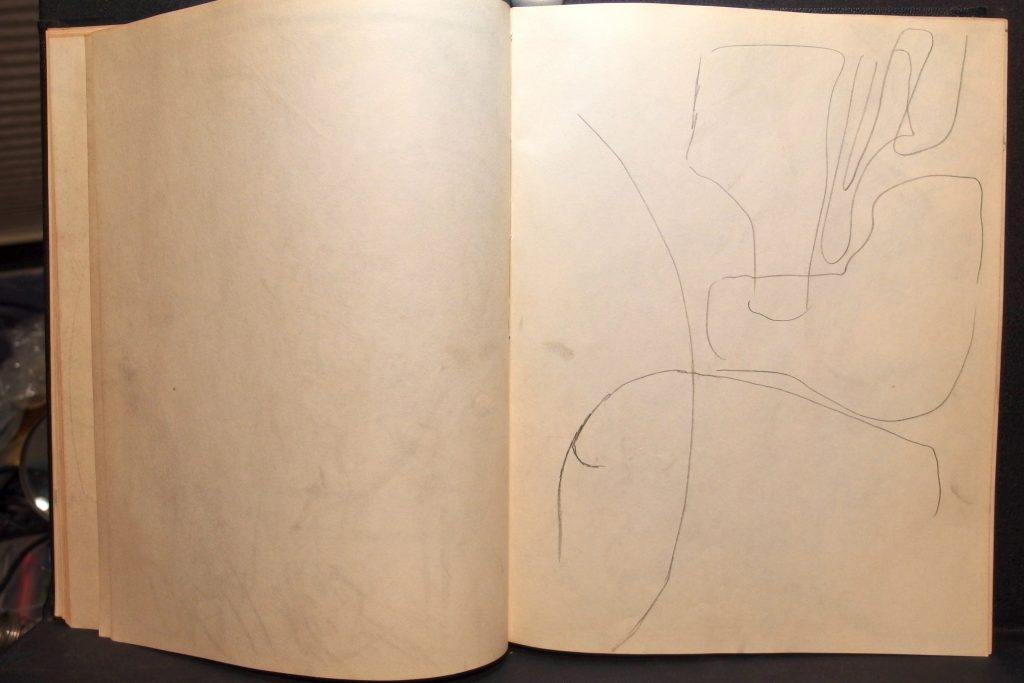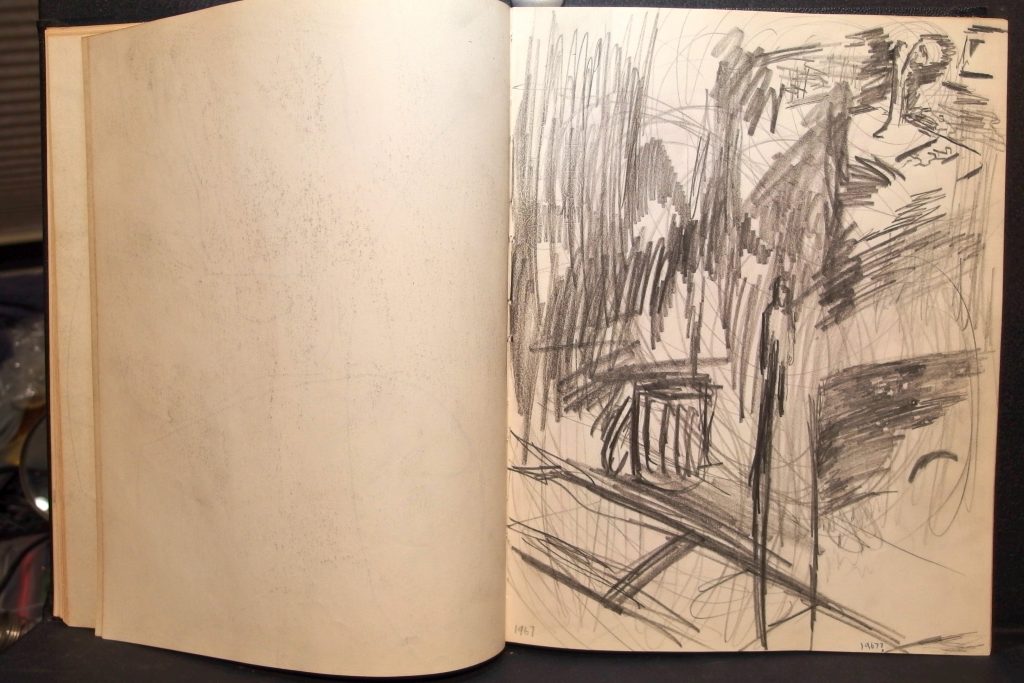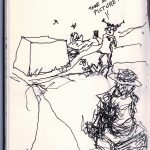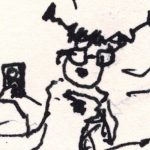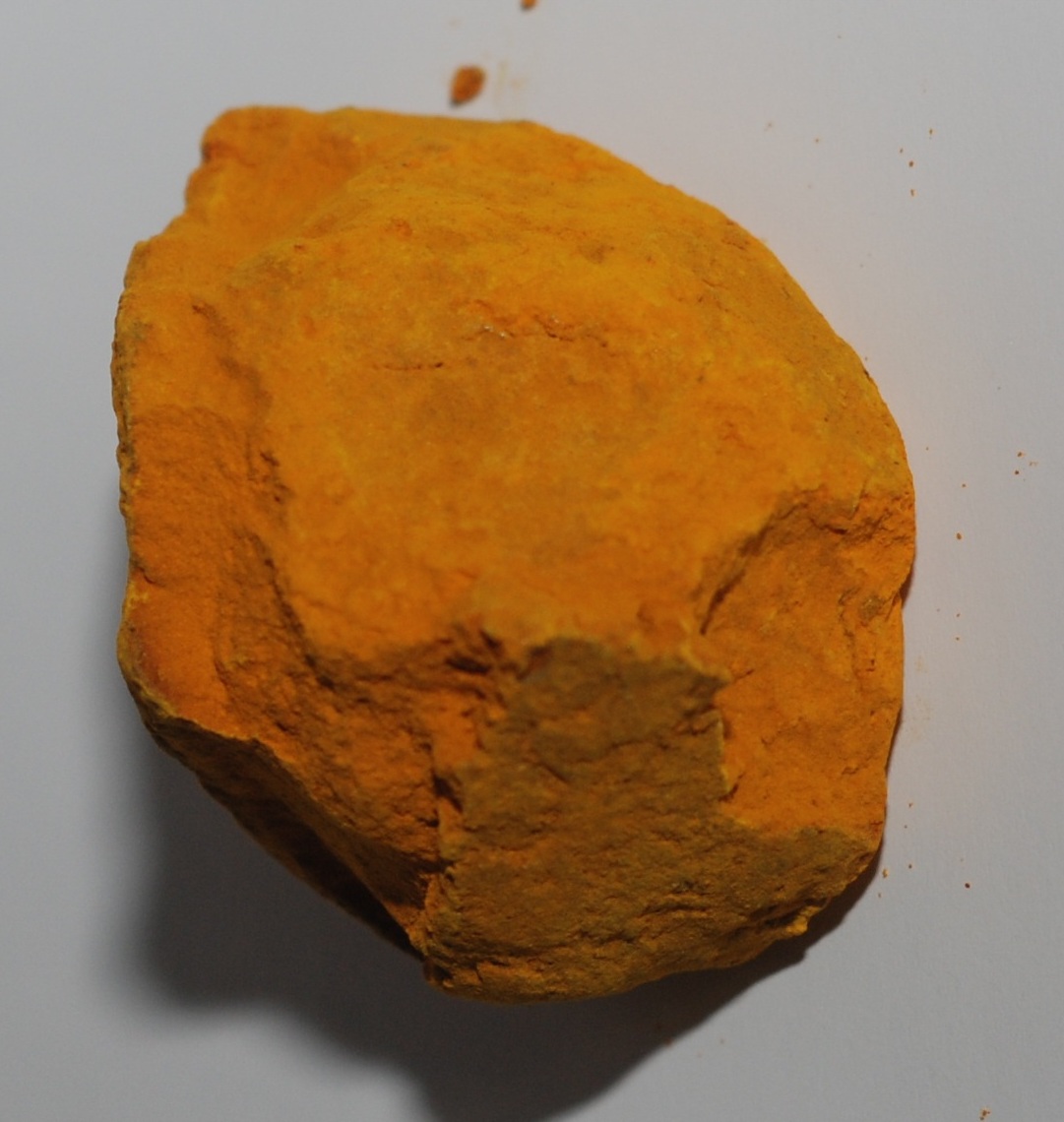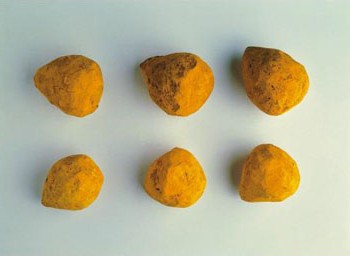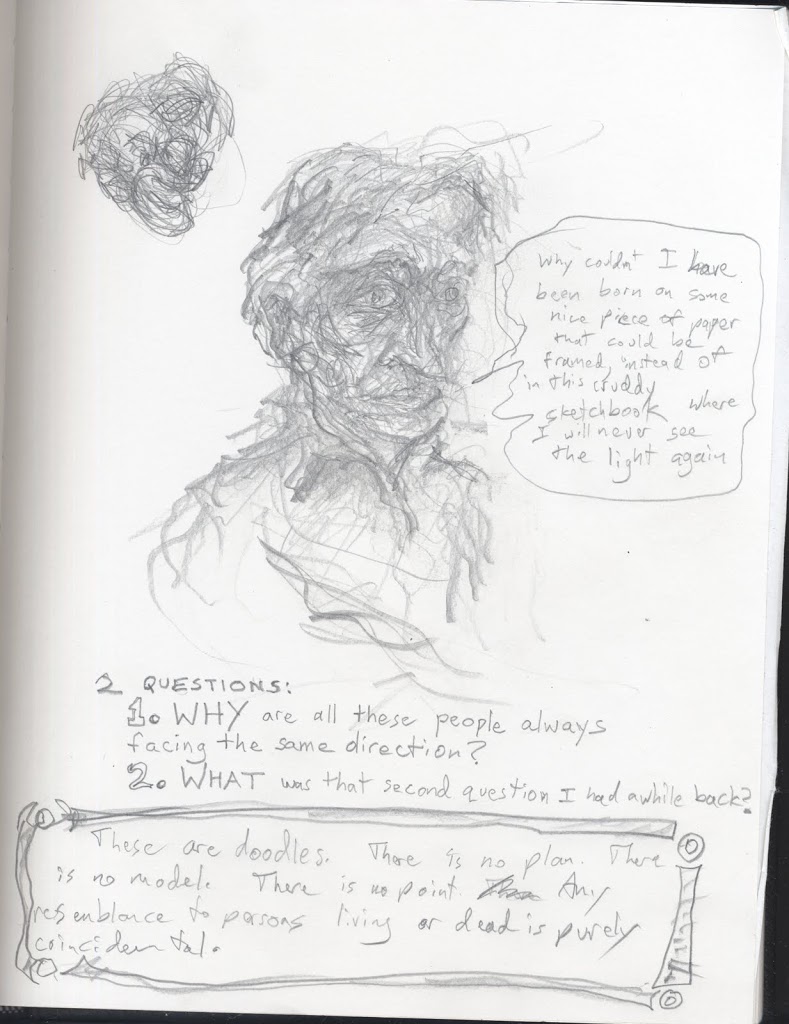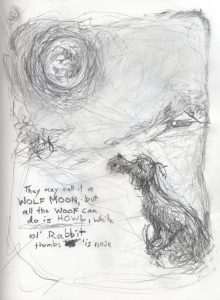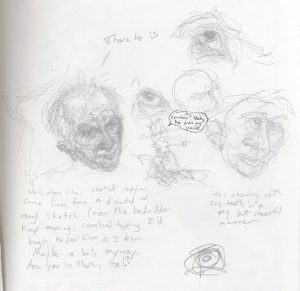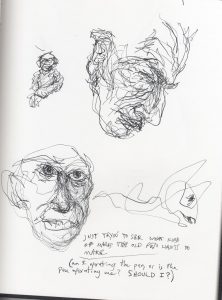awwww, go on
Category: art
Sketchbooks V1 (’59-’80) e2.2
A brief chapter with some attempts to make lines, a reference to a local celebrity, and an invention.
Sketchbook – Vol.1 p.2 ch. 5
The Late 20’s, continued. The alone deepens, the money runs out.
Sketchbook Vol. 1 Part 2 Chapter 11
Sketchbooks V.1 part 2 chapter 3
Sketchbooks V.1 (’59-’80), Ch.1: “childhood”
Here I begin the documenting of my hardcover sketchbooks with the first few pages of the first book I was given as a child. There are no dates, but I think it must have been about age 9-10. I think I was generally inhibited by the seriousness of the format, as it only sputters along for a few pages every couple of years. By my early teenage years I was already mostly disrupted and sidelined by feelings of despair and futility. Even though I drew constantly on whatever was in front of me, doing it on purpose raised too many questions of importance and “what are you going to do with that?” Then there’s a final couple pages here as an “adult”, say 16 or 17. The next section will begin a decade later when I found this book and began using it again, deciding I might as well work on these useless skills I had been plagued with all my life since I couldn’t stop thinking about it and everything else had crashed and it was one thing I could just do. I wrote and drew in many volumes fairly steadily for a couple of decades. Then, it all started sputtering again, and a couple more decades later I’m still struggling with long silences.
(Click any image to open gallery w/ slider. Note: in lightbox currently in use, in a computer browser there is a ‘zoom’, but it kind of resembles a ‘close’ button sitting in the upper-right corner. The ‘Close’ button is actually on the lower right.)
just some recent fountain pen doodles
I keep remembering, hours after I should have gone to bed, that reviving my lapsed focus on drawing, starting in reverse order of problems with getting the broken hand back in action, was supposed to be some sort of priority. I mean like, when the sun is coming up.
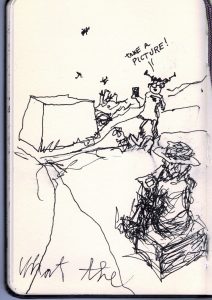 But, why should it be a priority, anyway? The world is overrun with people wandering around with sketchbooks now, and blogging about their practice and their techniques. Back when I was really in it no one else could be seen doing it in these parts (unless you were in the vicinity of the art school), and no one cared that I was.
But, why should it be a priority, anyway? The world is overrun with people wandering around with sketchbooks now, and blogging about their practice and their techniques. Back when I was really in it no one else could be seen doing it in these parts (unless you were in the vicinity of the art school), and no one cared that I was.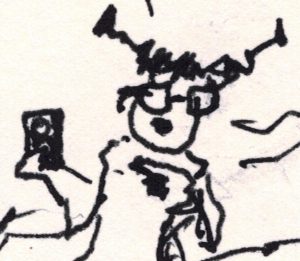 (Isn’t she cute, though? Less than an inch square in real life.)
(Isn’t she cute, though? Less than an inch square in real life.)
I have been using the old Pentalic Mark X, which when new seemed like a sad replacement for my favorite reasonably priced sketching fountain, the Pelikan 120. Although I have purchased a couple more 120’s off of ebay, at not so reasonable prices these days, I still do not have one working the way it used to. The Mark X just keeps flowing along, with no maintenance in the 35-40 years since it was new.

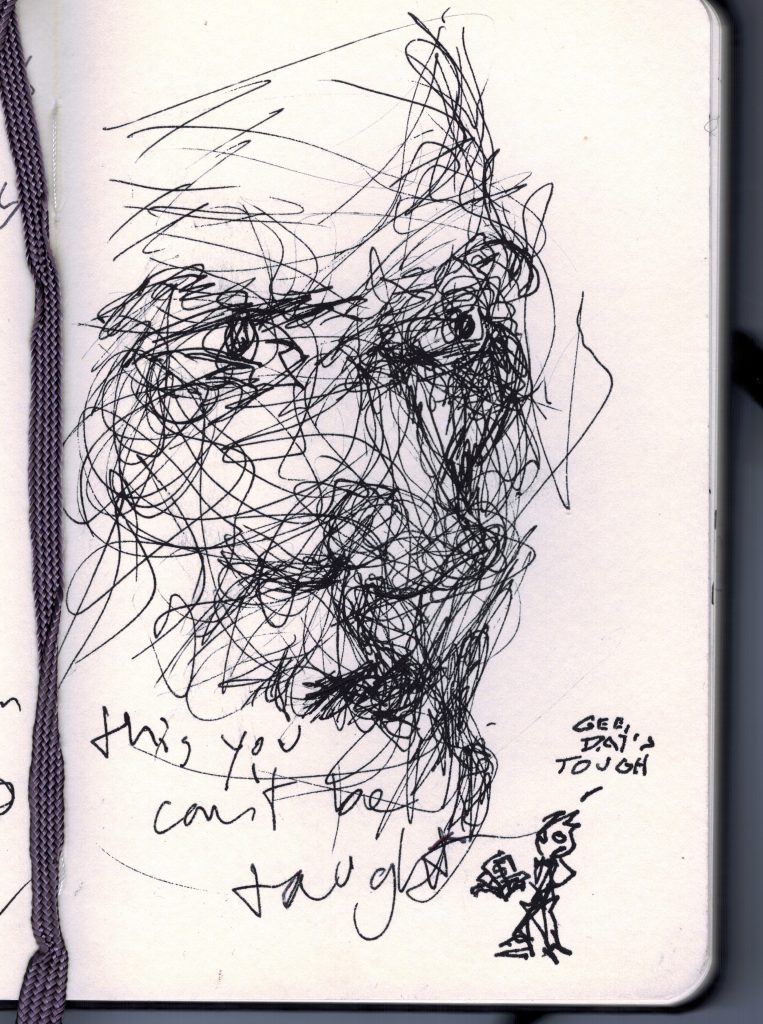

Color Entry
Indian Yellow.
Warning: the below story may make you think about heated cow urine.
Indian Yellow. Not, at first blush, what I would have expected. And, yes, when yellow blushes it appears orange. Not that I was expecting anything until I happened into a couple of tubes and was surprised and intrigued. But, my study of paints has mostly concentrated on essential single pigments, and it turns out the original pigment has not been available for over a century, and its origins are still mysterious and controversial.
The name had me thinking it must be some variant on Indian Red, thus an earth or a synthetic replacement. But, the only thing they have in common is they originally came from India. (And, another first tendency of mine was to think America.) Another surprising first impression was how different the colors from different manufacturers are. But, on reading about it in a color mixing book, I was informed that current versions might in fact be completely different substances or mixes from different sources, the original pigment having allegedly been banned around 1908. (Current advertisements usually start with coy phrases such as Gamblin’s ” This color has been prized for hundreds of years.” Yes, the color, not the pigment.)
Sketchbook Post
And then, years later… There’s a bit of hand/eye activity this year, although the hand hurts and the eye is dim. I share a few recent pages here (all the while feeling that showing the sketchbook is akin to showing one’s knickers.) Perhaps will dip and swim through the archives someday. I see that the pages are not showing well in the previews… please click on them a couple of times to see clearly.

